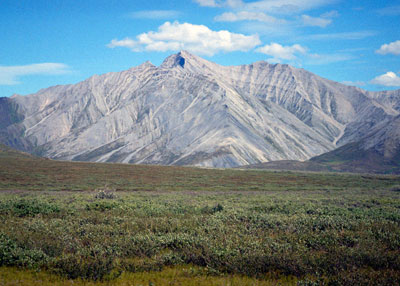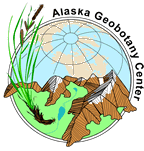Circumpolar Arctic Vegetation Unit B4
- CAVM
- Vegetation
- About the Vegetation Map Units
- Bioclimate Subzones
- Floristic Provinces
- AVHRR
- Elevation
- Lake Cover
- Physiography
- NDVI and Phytomass
- Substrate Chemistry
- Coastline
- Literature
Barrens:
B1B1. Cryptogam, herb barren -
B2B2. Cryptogam barren complex (bedrock) -
B3B3. Noncarbonate mountain complex -
B4B4. Carbonate mountain complex ||
Graminoid Tundras:
G1G1. Rush/grass, forb, cryptogam tundra -
G2G2. Graminoid, prostrate dwarf-shrub, forb tundra -
G3G3. Non-tussock sedge, dwarf-shrub, moss tundra -
G4G4. Tussock-sedge, dwarf-shrub, moss tundra ||
Prostrate-shrub Tundras:
P1P1. Prostrate dwarf-shrub, herb tundra -
P2P2. Prostrate/hemiprostrate dwarf-shrub tundra ||
Erect-shrub Tundras:
S1S1. Erect dwarf-shrub tundra -
S2S2. Low-shrub tundra ||
Wetlands:
W1W1. Sedge/grass, moss wetland -
W2W2. Sedge, moss, dwarf-shrub wetland -
W3W3. Sedge, moss, low-shrub wetland
Hierarchy of Geobotanical Vegetation Map Units (Walker DA 2002)

 B4. Carbonate mountain complex
B4. Carbonate mountain complex
Mountain vegetation on carbonate bedrock. The variety and size of plants decrease with elevation and latitude. Hatching color and code indicate the bioclimate subzone at the mountain base. B4b through B4e indicate subzones B through E; B4n indicates carbonate nunatak areas.
Detailed Description
Dry calcareous tundra complexes on mountains and plateaus with limestone or dolomite bedrock. Vegetation changes with elevation in the mountains, forming elevation belts whose vegetation is physiognomically similar to that of bioclimate subzones with comparable summer climate (see the elevation belt). The color of the polygon hatch pattern denotes the bioclimate subzone at the base of the mountains. For example, B4b occurs in Subzone B, B4c in Subzone C, etc. B4n denotes nunatak areas, with many carbonate mountain peaks surrounded by glaciers. Mesic zonal microsites are relatively uncommon. More common are plant communities growing on wind-swept, rocky ridges, screes, and dry fell-fields, alternating with snowbed plant communities.
Area: 136 x 1000 km2.
Representative Syntaxa
Belt a, Thlaspietea rotundifolii vegetation, e.g., Papaveretum dahliani Hofm. 1968; Belt b, Carici-Dryadetum integrifoliae Dan. 1982; Belt c, Carici- Dryadetum integrifoliae Dan. 1982; Belt d, Dryado integrifoliae-Caricetum bigelowii Walk. et al. 1994 (all Carici-Kobresietea); Belt e, cf. Anemono-Salicetum richardsonii Schickh. et al. 2002 (most of Northern America).
Dominant Plants
Saxicolous lichens cover the rock surfaces. Trees and shrubs, the grass Hierochloe alpina, and terricolous lichens, grow between the bedrock outcrops.
a=acidic, n=non-acidic


